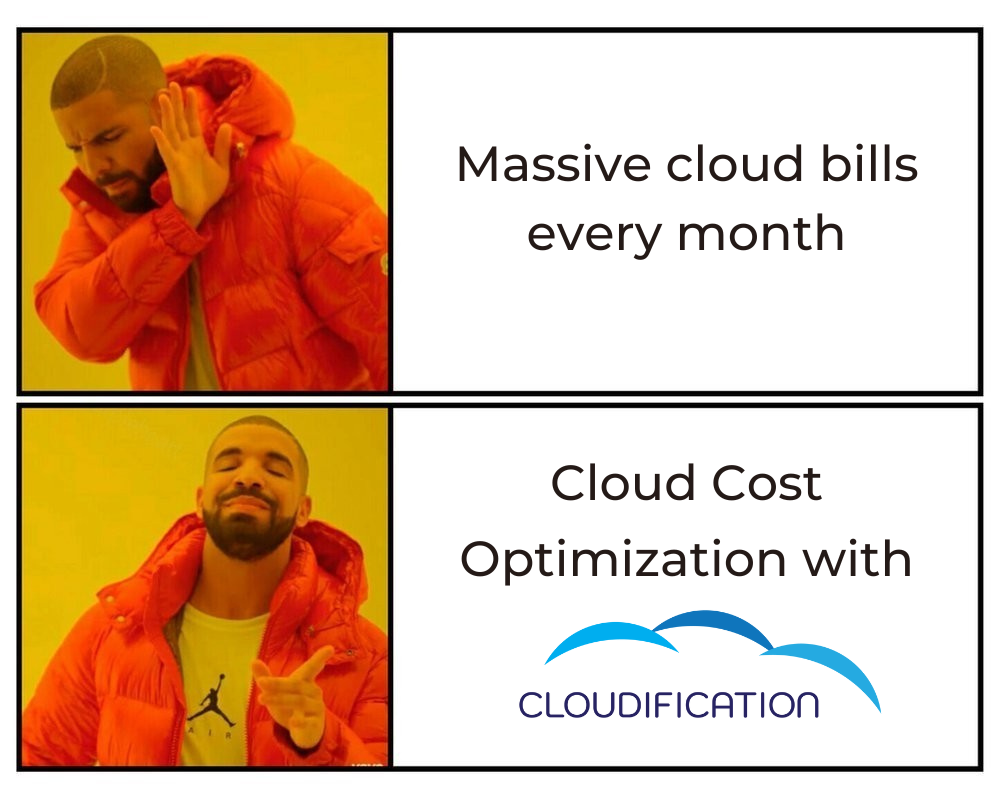Best Cloud Cost Optimization Strategies and why you should implement them now
As businesses increasingly rely on cloud-based solutions for their digital infrastructure, it’s important to understand the best strategies for optimizing cloud costs. By employing cost optimization techniques, organizations can reduce their overall spending on the cloud while also taking advantage of all the benefits cloud services have to offer. In this article, we’ll discuss why you should consider implementing cost optimization strategies from the get go, as well as the best strategies for optimizing cloud costs.
Reasons for implementing CCO Strategies
One of the main reasons you should consider implementing cost optimization strategies if you haven’t done so yet, is that cloud costs can quickly become unsustainable over time. Without proper management, organizations can easily end up spending far more on their cloud services than they need to or budgeted to in the first place and miss out on potential savings opportunities.
CCO Strategies does not only help you to save money on your cloud services, but it can also help you get the most out of cloud provider offerings. The benefits include lower costs, improved efficiency, and often better performance.
Cost optimization strategies involve identifying areas where you can reduce costs, such as eliminating or reducing unnecessary capacity and unused features, using automation to streamline processes, and dynamically optimizing resource usage depending on demand.
With lower costs, businesses can reduce their operational expenses and reinvest those savings in other areas that help to drive the organization forward. Improved efficiency helps to ensure that resources are being used optimally, allowing for greater productivity.

Cloud Cost Optimization Principles
There are 4 principles for Cloud Cost Optimization that will get you on the right track on your Cloud journey. If you want to avoid wasting resources like time and money and have a successful Cloud migration story you should keep these in mind at all times:
- Cost visibility
Having a clear overview of how and why each $ is spent. - Resource usage optimization
Monitoring through the lens of each service design and making sure the resources you are using fit your demand and use-case. - Price efficiency
Taking advantage of all discounts available at your Cloud provider is key. - Cost planning
Re-evaluating the Architecture and planning ahead can save you significant money in the long run.
Make sure to download our short CCO guide to know which questions to ask yourself to make sure you’re implementing all these principles correctly!
Now, let’s take a closer look at some of the CCO strategies based on those Principles
1. If don’t use it, you better lose it
One of the best strategies for optimizing cloud costs is to identify and eliminate any unnecessary services or resources that are not being used. Doing so will help reduce your overall cost while also freeing up capacity to focus on more important tasks. Often we’ll find a lot of provisioned, but not utilized storage, sometimes even virtual machines running without a purpose.
2. Automation
Automating your cloud infrastructure is another crucial cost optimization strategy businesses can use. Automating certain processes should prevent manual intervention, reduce human error and increase efficiency, resulting in more stable infrastructure and greater savings.
Automation can also ensure that resources are used optimally by scheduling workloads based on real-time conditions or utilizing predictive analytics for resource planning and automatic scaling.
You can automate tasks such as provisioning resources, scaling services and more with the help of automation services such as AWS CloudFormation or Azure Resource Manager. In the case of Kubernetes you can use Horizontal Pod Autoscaler (HPA), Vertical Pod Autoscaler (VPA) and Cluster Autoscaler (CA). These services allow you to provision and manage computing resources more easily and make sure that the resources you are using fit your needs.
3. Discounts, Using Reserved Instances and Spot Pricing
Another effective cost optimization strategy is utilizing reserved instances and spot capacity. Reserved instances provide discounts to customers who reserve capacity for long term (1-3 years) allowing to save about 30-70% compared to regular on-demand pricing.
Spot pricing provides even further savings by allowing businesses to bid on unused compute resources at discounted rates. Here, you can make use of open-source automation tools such as Autospotting that will help you save big on spot instances.
Additionally there are several CCO services like Kubecost that you can leverage to further reduce costs on Kubernetes. These services apply advanced algorithms and machine learning technologies to optimize resource usage in order to reduce costs while still maintaining required performance.
4. Choosing Appropriate Storage Types
When optimizing cloud costs, it is important to also consider the type of storage you will be using. Different types of storage solutions can provide different levels of performance and cost-efficiency. For instance, object storage is a very cost-efficient, highly scalable solution for unstructured data while block storage is better suited for transactional workloads.
There are multiple cloud storage services on the market that offer a variety of storage types and cost structures, allowing businesses to select the right solution for their specific needs. These services are typically more cost-effective than traditional on-premise solutions and can provide businesses with greater control over their data. The major advantage is that you can provision only as much storage as you need right now and scale it dynamically as the demand increases. There is no need to reserve 10TB volume and use only 10% planning for the long term. Instead you can provision 1TB and grow it with the demand.

Conclusion
Implementing cost optimization strategies is a must if you are aiming for a successful Cloud experience. These strategies will help you not only reduce cloud costs but also take full advantage of all the benefits that cloud computing has to offer. By utilizing reserved instances, spot pricing, automation, and appropriate storage types, businesses can maximize their savings while still maintaining required performance and SLAs.
It is important for businesses to take advantage of the cost optimization strategies now as the benefits will provide compound effects in the future. The sooner you act, the more you stand to save in the long run.
Are you trying to reduce your cloud costs and improve the efficiency of your DevOps team? Do you want to save money not only in the short-term, but also get the most out of your cloud investments in the future? Give us a call today!

